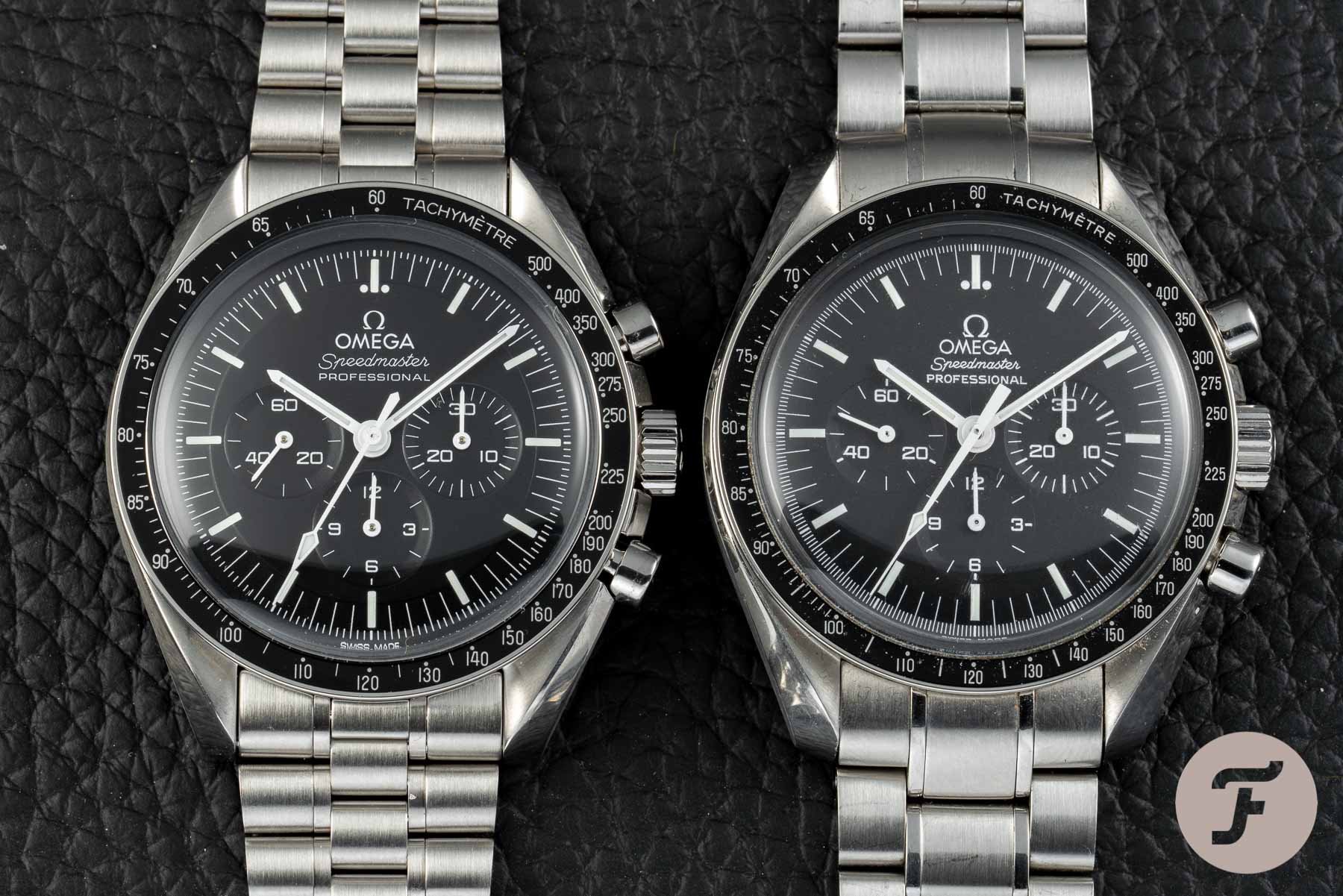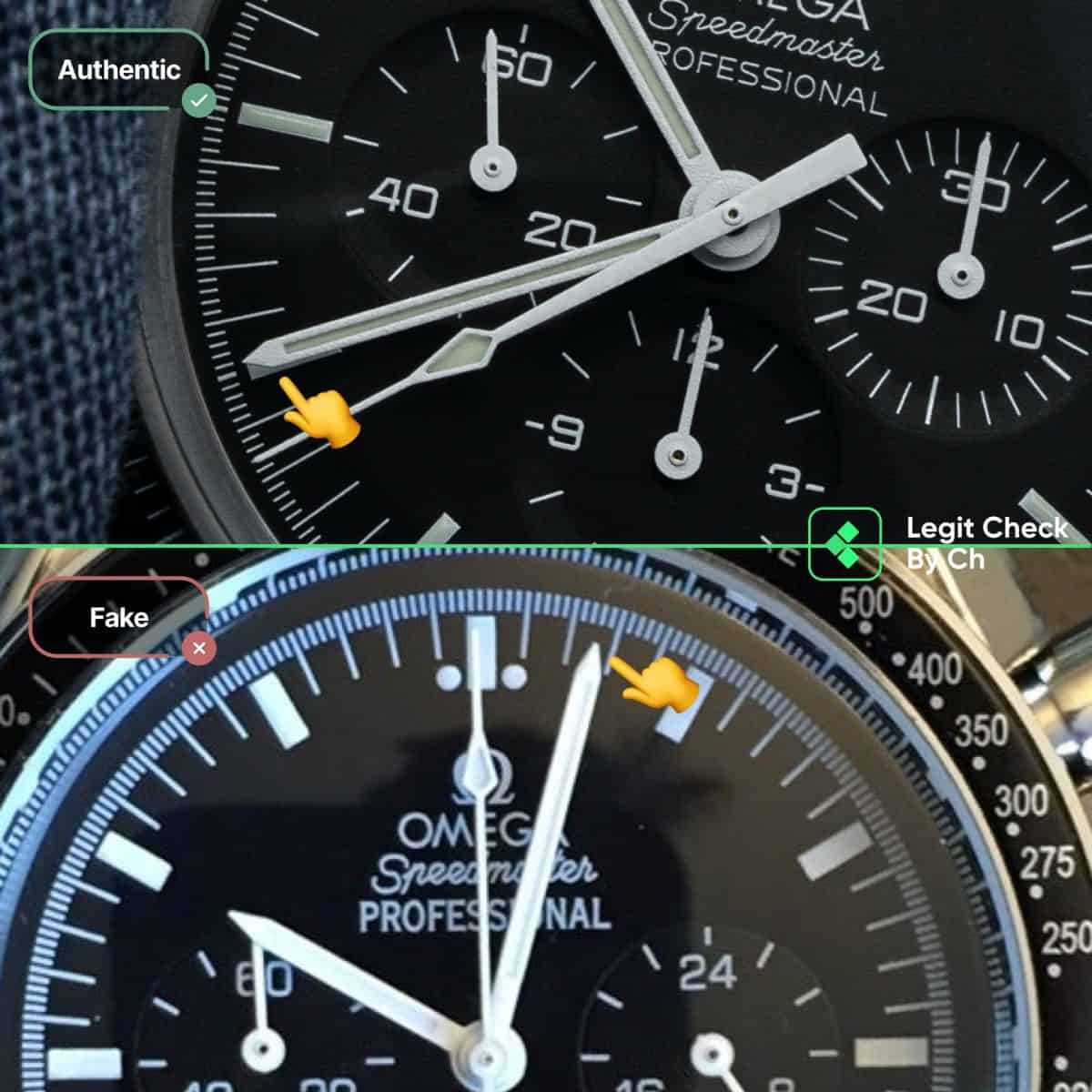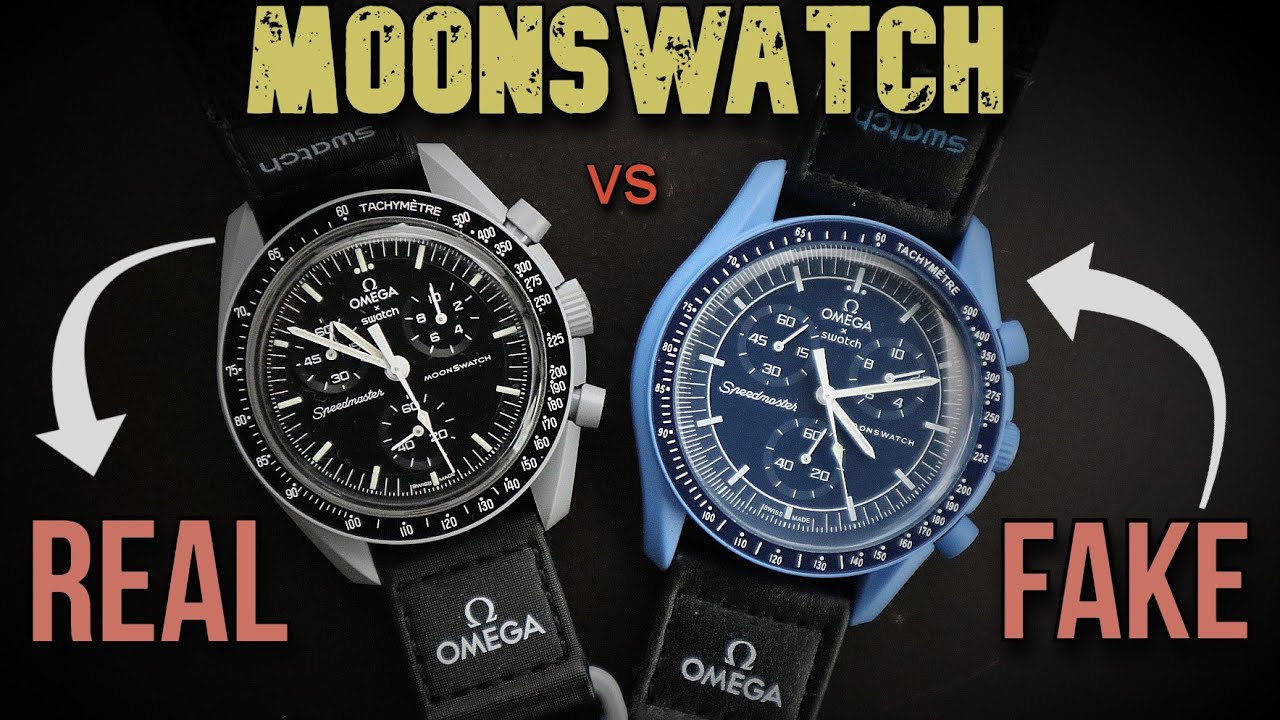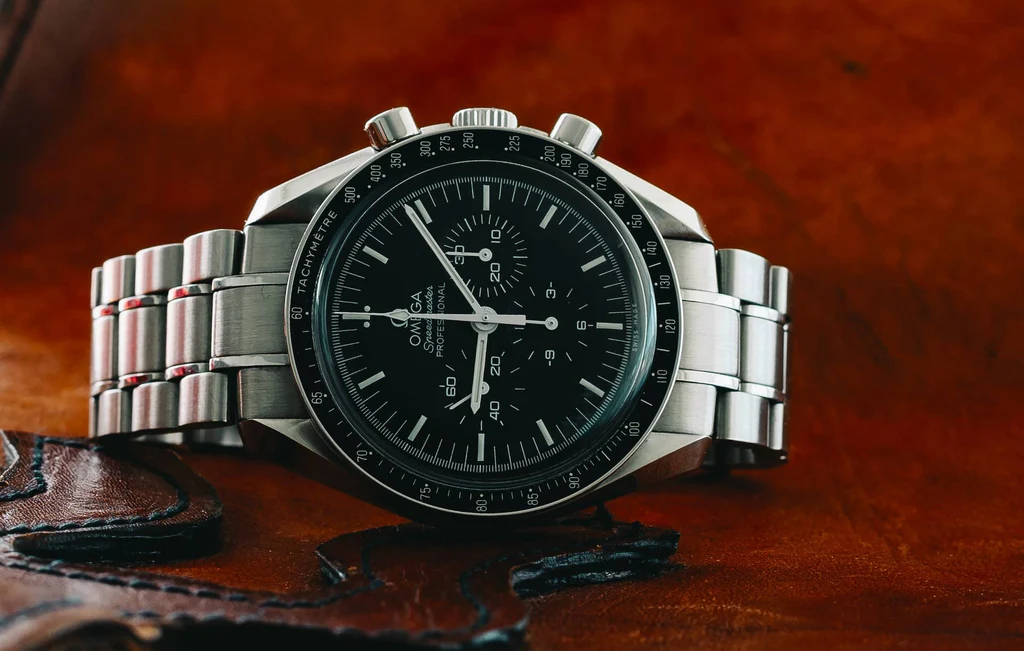Omega Speedmaster Moonwatch Clone vs Original
Omega Speedmaster Moonwatch Clone vs Original
The Omega Speedmaster Moonwatch is more than just a timepiece; it’s a symbol of human ingenuity, adventure, and the quest for knowledge beyond our planet. Known affectionately as the “Moonwatch,” this iconic watch has played a pivotal role in NASA’s lunar missions, culminating in its historic place on the Moon during the Apollo 11 mission in 1969. Omega Speedmaster Moonwatch Clone vs Original – in a world filled with replicas and clones, a pertinent question arises: how do these affordable alternatives stack up against the prestigious original? Many watch enthusiasts and casual buyers alike find themselves torn between the allure of owning a genuine Speedmaster and the tempting price tag of a clone. Exploring the differences, craftsmanship, and historical significance behind these watches will shed light on this captivating comparison.
Definition of Omega Speedmaster Moonwatch
The Omega Speedmaster Moonwatch is the official name for the timepiece that was worn by astronauts during NASA’s Apollo missions. Its precise design and functionality have made it legendary among watch aficionados and collectors.
- History: The Moonwatch first made its journey into space on June 3, 1965, when it was worn by astronaut Edward White during the Gemini 4 mission, and its legacy continued as it was featured prominently in subsequent Apollo missions. NASA has trusted the Speedmaster for several critical spaceflights, including the first moon landing in 1969.
- Design Specifications: The watch encompasses a robust 42mm stainless steel case, featuring a matte black dial with luminous hour markers. It is equipped with a tachymetric bezel and is available with either a Hesalite or sapphire crystal.
- Movement: At the heart of the original Moonwatch is the Caliber 1861 movement, known for its reliability and precision. This manual-winding chronograph movement has been embraced by watch enthusiasts for its mechanical charm and performance.
- Water Resistance: With a water resistance of 50 meters, the Speedmaster is not only designed for space but also capable of withstanding everyday challenges.
- Legacy: Beyond its technical specifications, the Speedmaster is enshrined in horological history. It is recognized as a genuine tool watch, tested under extreme conditions and certified for space travel, Iconic by design and celebrated for its craftsmanship, the Omega Speedmaster Moonwatch embodies more than just timekeeping; it represents a legacy that resonates with explorers and watch lovers alike.
Features of the Original Omega Speedmaster Moonwatch
The original Omega Speedmaster Moonwatch epitomizes luxury, craftsmanship, and a rich history that sets it apart from clones. When dissecting its features, the attention to detail and the excellence in engineering become evident.
- Materials Used: The original Omega Speedmaster is constructed from high-quality stainless steel, selected for its durability and resilience against wear. The choice of sapphire or Hesalite crystal underlines Omega’s commitment to using top-tier materials, contributing to the watch’s scratch resistance and longevity.
- Movement Precision: The manual Caliber 1861 movement offers exceptional accuracy, a crucial factor for a watch intended for space exploration. Unlike many clones that opt for quartz or lower-quality movements, the original Speedmaster employs a handcrafted mechanism designed to endure extreme conditions.
- Tachymetric Scale: Integrated into the bezel, the tachymetric scale assists with speed calculations based on time, elevating the Moonwatch’s functionality. This feature stands out in true Moonwatch fashion, giving it a sporty yet elegant edge that clones often overlook.
- Chronograph Capability: With sub-dials showcasing the chronograph function, the Speedmaster allows for precise timing, which is important for both everyday wear and extreme circumstances like missions into space. The fine-tuned details in the sub-dials reflect meticulous craftsmanship that is hard to replicate in clones.
- Iconic Design: The overall aesthetic embodies the vintage ethos and timeless charm of a classic watch. Features such as luminous hour markers and distinctive Omega branding contribute to its status as not merely a watch but an object of desire among collectors.

Characteristics of Omega Speedmaster Moonwatch Clones
The market for clones of the Omega Speedmaster Moonwatch has flourished, catering to budget-conscious consumers looking for a similar aesthetic. However, the difference in quality is stark.
- Material Quality: Clones often utilize lower-grade stainless steel or plastic materials to keep costs down a significant departure from the original’s premium metals. This difference impacts both durability and overall appearance, with clones often looking less refined.
- Movement Types: While the original’s movement is a sophisticated mechanical mechanism, many clones feature simple quartz movements or less complex automatic movements, resulting in less accuracy and potential reliability issues over time.
- Design Limitations: Clones may attempt to incorporate features like sub-dials and tachymetric scales, but often these elements lack the precision and artistry evident in the original. The craftsmanship in detailing frequently falls short, leading to a less appealing aesthetic.
- Durability Concerns: The shatter resistance of the Hesalite crystal found on original models presents a significant advantage. In contrast, clones may replace this with inferior materials susceptible to scratching or breaking easily, affecting their longevity.
- Market Appeal: Many buyers of clones prioritize price over authenticity, seeking a similar look without the hefty investment. However, as many clone owners discover, the initial savings often come with trade-offs in performance, quality, and overall satisfaction.

Comparison of Craftsmanship: Original vs Clone
The craftsmanship is a defining characteristic that distinguishes the original Omega Speedmaster Moonwatch from its clones. The level of detail and quality in their construction is unparalleled.
| Feature | Original Omega Speedmaster | Clone Models |
|---|---|---|
| **Material Used** | High-quality stainless steel | Lower-grade stainless steel/plastic |
| **Movement** | Manual-wind Caliber 1861 | Quartz or lower-grade automatic |
| **Detailing** | High attention to detail | Simplified dials and logos |
| **Durability** | Hesalite crystal or sapphire | Inferior plastics or glass |
| **Overall Craftsmanship** | Exquisite with premium finish | Often lacks premium touches |
- Handcrafted Excellence: The original Speedmaster showcases hand-assembled components that reflect Omega’s long-standing dedication to quality. In contrast, clones are often mass-produced, compromising the artistry associated with luxury horology.
- Finishing Techniques: Special attention is given to polishing and finishing in the original model. Features such as the tachymetric scale and sub-dials are executed with precision that makes them aesthetically pleasing, a quality that’s frequently absent in clones.
- Reliability: The rigorous testing that the original undergoes for space travel significantly enhances its reliability, something clones cannot claim. This considered engineering fosters trust among consumers seeking a timepiece that can withstand diverse environments.
- History Matters: The story behind a timepiece can elevate its allure. With the Speedmaster’s storied past, the craftsmanship involved takes on additional significance, creating a connection between the watch, its wearer, and its legacy of exploration.
- Collectability: Due to its unrivaled craftsmanship and historical importance, the original Omega Speedmaster is highly coveted among collectors. Clones, however, often reside in a realm of disposability, failing to engender the same level of passion or interest.

Pricing Analysis: Omega Speedmaster Moonwatch Original vs Clone
Pricing is a crucial factor when comparing the Omega Speedmaster Moonwatch to its clones. Here’s how the investment stacks up:
| Model | Approximate Price Range |
|---|---|
| **Original Omega Speedmaster** | $5,250 – $5,350 |
| **Clone Models (Average)** | $50 – $500 |
- Investment Value: The original Omega Speedmaster commands a more significant financial commitment reflecting its craftsmanship, heritage, and investment potential. These timepieces often retain value exceptionally well in the collector’s market.
- Affordable Alternatives: In contrast, clones often struggle to hold their value. They may appeal to those seeking immediate gratification without the long-term financial commitment associated with the original.
- Depreciation Concerns: Clones tend to depreciate rapidly, often losing much of their value shortly after purchase. This vast disparity in retention reinforces the notion that owning an original Moonwatch is a more strategic investment over time.
- Cost vs. Value: While clones are significantly cheaper, they rarely offer the same satisfaction and value associated with an authentic Omega Speedmaster. Buyers may view their savings as a bargain, but the lack of craftsmanship can lead to disappointment.
- Financial Considerations: For watch collectors and enthusiasts, the decision often balances the upfront cost with long-term value. The original, while more expensive, offers a cultural significance and craftsmanship that makes it worth the investment.

Durability and Reliability: How Do Clones Stack Up Against Originals?
Durability and reliability are paramount in any timepiece, especially a watch designed for space missions.
- Material Integrity: The original Speedmaster utilizes superior materials designed to withstand extreme environments. The strong stainless steel case and choice of Hesalite or sapphire crystal provide both durability and scratch resistance.
- Compared to Clones: Often, clones incorporate lower-quality materials that compromise both appearance and functionality. Many clones feature cases made of more fragile metals or plastic components that can easily break or wear over time.
- Water Resistance: The original boasts a water resistance of 50 meters, ensuring that it can function during typical daily activities without concern. Clones may make similar claims but are often built without the rigorous testing employed by Omega.
- Performance Under Stress: The Speedmaster has passed numerous tests to ensure it can function in the harsh conditions of space travel, including varying temperatures and pressures. Clones lack this extensive testing, making their reliability more questionable.
- Long-Term Use: For enthusiasts, owning a timepiece is about more than just aesthetics; the ability to wear the watch confidently knowing it won’t fail is critical. The original Speedmaster fosters confidence, while clones can often lead to concerns about their long-term durability.
Brand Value: Original Omega Speedmaster Moonwatch vs Clone Models
The brand value of the original Omega Speedmaster Moonwatch is immense, deeply rooted in its legacy and craftsmanship.
- Historical Significance: As the first watch worn on the moon, the Speedmaster embodies a monumental achievement in both watchmaking and human exploration a story that has endeared it to collectors and enthusiasts over decades.
- Reputation of the Brand: Omega is synonymous with quality and precision in watchmaking. Its commitment to excellence is evident in every Speedmaster it produces, which adds to the watch’s value and desirability.
- Clones: Clone models may aim to imitate the design elements of the Speedmaster, but they lack the historical or cultural significance that adds value to the original. This absence of heritage often leads to clones being viewed as disposable imitations rather than serious timepieces.
- Investment Potential: The original Omega Speedmaster often appreciates in value over time, making it not only a collector’s item but also a sound financial investment. Clones, conversely, do not maintain their value, leading many buyers to reconsider their choices.
- Community and Enthusiasm: The original Omega Speedmaster fosters a sense of community among collectors, who appreciate its legacy and craftsmanship. Clones lack this culture, resulting in a less engaged base of owners and enthusiasts.
Popular Clone Models of Omega Speedmaster Moonwatch
The market is flooded with various clone models attempting to recreate the iconic Speedmaster Moonwatch experience at an affordable price.
- Seagull 1963: Known for its vintage feel, the Seagull 1963 represents a tribute to the original with a chronograph function. While visually appealing, it lacks the precision and historical significance of the Omega.
- Invicta Models: This brand offers numerous homage designs but often compromises on quality and movement. Pricing can range from $50 to $300, making them accessible to a wider audience.
- Titan Automatic Chronographs: Similarly, Titan watches aim to replicate the Speedmaster design but use inferior materials and movements. Customers often report mixed satisfaction.
- Orient Star Retro-Future: A lesser-known alternative, Orient does its best to emulate the Speedmaster look but can’t quite capture the robust reputation and functionality.
- Quality Variance: Depending on the specific clone model, the quality can vary dramatically. While they may superficially resemble the Speedmaster, a deeper dive reveals significant differences in craftsmanship.

Customer Reviews and Experiences: Original vs Clone
Customer reviews and experiences provide valuable insights into the realities of owning either an original Omega Speedmaster Moonwatch or a clone.
- Original Owners: Many customers emphasize the pride and satisfaction from owning the iconic Moonwatch. They often cite the unparalleled craftsmanship and heritage as major reasons for their investment. Positive experiences often lead to discussions about the watch’s cultural significance.
- Clone Owners: While some clone buyers enjoy the aesthetics, many report disappointment regarding the overall quality and reliability. Users may find themselves wishing they had invested in the original when faced with issues.
- Long-Term Sentiments: Owners of original models frequently describe their watches as “forever pieces,” citing their enduring quality and lasting value. Comparatively, many owners of clones tend to see their watches as disposable, lacking the connection that genuine ownership inspires.
- Investment Perspectives: Reviews often highlight value retention as a significant advantage of the original. Clones typically lose value rapidly, leading many owners to lament their choice upon resale.
- Community Engagement: The community surrounding the Omega is vibrant and encouraging, with various forums and discussions celebrating their history. Clone owners often miss out on such a rich connected experience.

Resale Value: What Happens to Clones Compared to Originals?
Resale value is a critical aspect of owning a luxury watch, and it starkly differentiates the original Omega Speedmaster from its clones.
- Original Speedmaster: Typically retains 20-30% of its initial retail price or can even appreciate in value, especially for vintage models. The robust market for originals makes them desirable investments.
- Clones: In contrast, clonemodels often experience a rapid drop in resale value, often rendering them nearly worthless shortly after purchase. This depreciation stems from a lack of brand recognition and inferior craftsmanship.
- Market Demand: The demand for genuine Speedmasters fuels their value retention while clones struggle to attract interest due to their lack of unique identity or historical significance.
- Collector Sentiment: Many collectors advise against clones precisely for this reason: the long-term value and satisfaction derived from an original far outweigh the initial savings provided by a replica.
- Investment Wisdom: Thus, for watch enthusiasts and collectors, investing in the original model not only ensures a revered timepiece but also offers reassurance concerning future marketability.
Warranty and Customer Support: Original vs Clone
When purchasing a luxury timepiece, warranty and customer support are vital aspects that can influence a buyer’s decision.
- Original Omega Warranty: The original Omega Speedmaster comes with a comprehensive international warranty that covers any manufacturing defects. The watch must be paired with a duly filled and stamped warranty certificate to validate it, ensuring peace of mind for the owner.
- No Warranty for Clones: Conversely, most clones come without any warranty or legitimate customer support, leaving buyers unprotected against defects or malfunctions post-purchase. This lack of assurance can lead to frustration.
- Post-Purchase Reliability: Omega’s reputation includes after-sales support, where authorized dealers can assist in servicing and maintaining the watch. Clone manufacturers often lack this support structure, and finding help can prove challenging and unsatisfactory.
- Purchasing Safeguards: For originals, purchasing from an authorized dealer not only confirms authenticity but also guarantees assurance regarding quality support. Clones, however, often appear on unauthorized platforms, raising the risk connected to counterfeit items.
- Informed Choices: Thus, the stark difference in warranty and support creates another compelling argument in favor of investing in the original Omega Speedmaster, primarily for those looking for reliability in their luxury acquisition.

Where to Buy: Authorized Dealers for Originals vs Retailers for Clones
Understanding where to purchase your Omega Speedmaster or its clones is crucial in ensuring authenticity and satisfaction.
- Authorized Dealers for Originals: When purchasing the original Omega Speedmaster, it is recommended to buy from authorized retailers. These recorded merchants not only verify the authenticity of the watch but also provide post-purchase support and service.
- Risks with Clones: Clones, often sold through unauthorized retailers or online marketplaces, carry significant risk. The chance of acquiring a counterfeit or subpar product remains high, making due diligence essential.
- Research Importance: For Omega, thorough research into authorized distributors can lead to a smoother acquisition experience. Buyers should always ensure they’re investing in a legitimate product backed by quality assurances.
- Reputation Matters: The reputation of the retailer plays a crucial role; authorized dealers are more likely to be credible, while clone sellers may vary significantly in terms of reliability and financial stability.
- Complete Purchase Confidence: Therefore, securing an original Speedmaster from an authorized dealer not only enhances trust in the purchase but also fortifies the investment’s long-term integrity.

Final Thoughts: Should You Invest in an Original or Settle for a Clone?
Investing in an original Omega Speedmaster Moonwatch versus opting for a clone encapsulates several pivotal factors, from financial worth to historical significance and personal taste.
The original Omega Speedmaster Moonwatch is not merely a watch it’s a piece of history and a hallmark of horological achievement that boasts unmatched value and craftsmanship. Its historical relevance as the first watch worn on the moon and its ongoing recognition in the luxury watch community position it as a collector’s Holy Grail.
In contrast, clones often provide an estimated semblance of the original at a fraction of the price, but they do so without carrying the same significance or quality. While they might attract those looking for an inexpensive and aesthetically similar alternative, they generally lack the craftsmanship and pricing resilience that characterize the original models. Typically disposable in nature, clones provide little in the way of lasting satisfaction or retention of value.
For any serious collection or lavish timepiece, the original emerges as the clear winner, delivering not only quality and reliability but also a prestigious legacy. For those contemplating this investment, knowing the value of authenticity, craftsmanship, and long-term rewards will ultimately lead to an informed and gratifying choice.
FAQs
1. What is the price difference between the original Omega Speedmaster and clones?
- The original Omega Speedmaster typically ranges from $5,250 to $5,350, while clones usually cost between $50 to $500.
2. What materials are used for the original Omega Speedmaster?
- The original features high-quality stainless steel and is available with a Hesalite or sapphire crystal.
3. Do clones offer any warranty?
- Most clones do not come with any warranty or customer support, while the original Omega Speedmaster has a comprehensive warranty.
4. How do clones compare in terms of durability?
- The original Speedmaster is built to last, with rigorous testing for durability, while clones often use inferior materials that may scratch or break easily.
5. What should I consider when purchasing an Omega Speedmaster?
- It’s crucial to buy from authorized dealers for the original to ensure authenticity and support. Clones can often be found at less reputable retailers.
Key Takeaways
- The Omega Speedmaster Moonwatch has a rich history tied to space exploration.
- Original models maintain higher resale value compared to clones.
- The quality of materials and movement in the original is significantly superior.
- Customer support and warranties are comprehensive for originals but lacking for clones.
- Investing in an original Omega Speedmaster is a long-term, satisfying choice for collectors and enthusiasts.
In conclusion, when weighing the choice between an Omega Speedmaster Moonwatch clone and the original, consider the legacies, craftsmanship, and values at stake. Owning an original not only brings prestige and reliability but also offers the joys of owning a timepiece steeped in history. Conversely, clones may tempt with their lower price points but often deliver fleeting satisfaction and minimal long-term value. Investing in authenticity is not just a purchase it’s a commitment to a legacy that will endure for generations to come.
Suggested Google Searches:
- Omega Speedmaster Moonwatch review
- Is the Omega Speedmaster worth the money?
- Differences between Omega Speedmaster clones and originals
- How to spot a fake Omega Speedmaster
- What is the best clone of the Omega Speedmaster?

